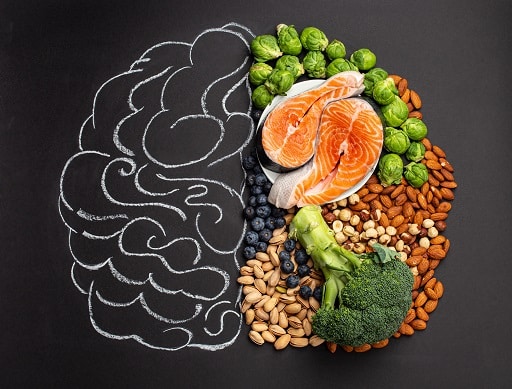
10 Foods That Help Fight Fatigue
We are big fans of the “eat the rainbow” approach to healthy eating. The colorful fruits, vegetables and legumes that are part of this group
Have you ever set a pretty out-there nutrition or weight loss goal only to be disappointed? Sometimes, it can feel like you’re not getting anywhere when it comes to nutrition and health goals.
Big goals sound exciting initially, but when progress feels so slow, it can soon hit your motivation. But by re-evaluating how you set goals, you can start to achieve success one step at a time. These nine examples of nutrition goals can give you a strong foundation to create your own, completely achievable goals.
What you eat matters; your diet impacts your gut, health, and well-being. Eating the right balance of foods and nutrients can help you live a longer and healthier lifestyle. Setting dietary goals can help you make impactful changes to how you eat.
Goal-setting is an art. Understanding how to set goals and knowing how to achieve them is an important life skill. But that doesn’t make it any easier. Nutritional goals can make the difference between success and failure. Having a goal sets you up in the best way possible. It’s important in anything you do, whether it’s work, fitness, or healthy eating goals.
Here are some standout goal-setting statistics to show how it can make a difference:
Long-term goals help you to see the big picture. So, your long-term nutrition goals and objectives could be to lose weight. But your daily nutrition goals will be much more specific. Creating goals is not just about seeing a number or result; it’s about keeping you motivated and giving you a plan to succeed.
The problem with a target is that it doesn’t address how you will get there. It just gives you a number to work towards. It doesn’t necessarily create behaviors and habits that are essential for living a healthy life.
Setting goals in professional life may feel like a breeze to you. However, when it comes to your nutrition, maybe you’re struggling to hit those goals. This is completely normal. It can be hard to know where to start. Most people want to eat a little healthier and cut back on processed foods. But what does that actually look like in your day-to-day life?
When talking about SMART goals for healthy eating, it’s a specific way to set goals. You can use this in all areas of your life. Here’s what a SMART goal stands for:
As you think about setting goals, go through this checklist to see if that goal makes sense for you. You can have one big-picture goal and break it down into smaller achievable daily goals. A mixture of short, mid, and long-term goals helps you step towards the life you want.
Whether your goal is to eat more fiber, have fewer animal products, or lose weight, you will need a plan to support your goal.
For example, if you’re looking to lose weight, losing one to two pounds per week is enough for sustainable weight loss. While weight loss may be the ultimate goal, you can break it down into smaller steps. Here are some SMART goals diet examples that could help:
These are relatively modest changes. It’s not about overhauling your entire diet and fitness regime to be the healthiest version of yourself overnight. Sudden and drastic change is challenging to maintain. Instead, it’s about setting relevant and achievable goals for you so you can step that bit closer to your long-term goal.
Nutrition goals can look very different, and they are entirely personal. Maybe you want to lose weight, learn healthier cooking techniques, learn more about nutrition, or even cut down your meat intake. Whatever your primary goal is, you can create several goals that help you formulate a plan. Here are nine examples of nutrition goals to show how small steps add up to a big change.
If you skip breakfast and then you’re starving by 11 AM and reach for the unhealthiest snack you can find, you are not alone. Instead, for the next two weeks, set a goal of eating a healthy and well-rounded breakfast in the morning. It should include fiber, protein, whole grains, fruits, and vegetables.
Try these breakfast ideas:
It’s easy to buy lunch at work every day. If you forget to make lunch or usually eat out, it’s difficult to track what you’re eating. By packing your lunch at home for one month, you know exactly what nutrients you will be having. You can prepare meals ahead for the week and include plenty of fiber, protein, and nutrients to keep you feeling full for the whole day.
To save time, you can batch cook at the weekend and prep your meals ahead of time. Salads, soups, and wraps are ideal for lunches.
Standard soda is high in calories and sugar. Sugary drinks are the leading source of added sugar in the American diet. Regular consumption of sugary drinks is associated with obesity, weight gain, type 2 diabetes, and tooth decay. Sugary drinks include fruit juice, energy drinks, and sweetened beverages.
For one week, swap out any soda you drink with water. Habits take a while to build up, but if you can commit to one week, it will be easier to keep going. Having water instead of soda removes a lot of added sugar from the diet and nutritionally empty calories.
Measuring food portions can sound boring and time-consuming. But there’s a reason that it’s a good idea. Being aware of portion size is important for both overeating and undereating. Both eating too much or not enough can lead to health problems because your body could be getting not enough or too little of certain nutrients.
Every person is different with varying activity levels, so your portion size recommendation can differ. You don’t need to measure your portions forever, but committing to twelve weeks can help to gain a better understanding of what you eat. By eating more of certain foods and less unhealthy ones, you can enjoy a well-balanced and healthy diet.
If you’re looking for nutritional goals for weight loss, this is a good one. When you eat a meal, focus on filling half of your place with vegetables for the next seven days. Vegetables are full of fiber and nutrients, leaving you feeling fuller for longer. They are also great for weight loss as vegetables tend to be low in calories as well as filling.
Have One Meatless Meal Once a Week
Going meat-free for one day a week can open your eyes to more recipes and types of cooking. It can help cut down on foods that are more likely to be high in saturated fat. On the day you cut out meat, you can eat more whole grains, fruits, and vegetables to fill your body with nutrients. Little changes can add up to a significant impact over weeks and months.
When you step out of your comfort zone in the kitchen, you might find some new recipes and foods that you enjoy. Nutrition goals don’t need to be boring. They can get you excited about eating healthily and feeling good.
Although eating out at a restaurant or getting a takeaway is delicious, it’s difficult to know what you’re eating. If you tend to eat out a lot, there are a lot of hidden calories in sauces, dressings, and meals that most people don’t realize. By cooking from scratch one meal this week, you know what is in your food.
Cooking from scratch seven days a week might be unattainable for some. On the other hand, cooking at home three days a week is perfectly achievable. Adapt your nutrition goals to your life so that it makes sense for you. Other benefits of cooking from scratch include:
If your go-to snack is usually a sweet treat, try choosing a piece of fruit or a handful of nuts instead. You could commit to this for two weeks for one of your snacks each day. After the two weeks, you could choose to switch all snacks to fruit or nuts.
By developing healthy habits one step at a time, it’s easier to maintain them as they become second nature. That’s not to say that you can’t indulge from time to time and enjoy it.
Fat often gets a bad rep, but it’s not all bad. Too much fat in your diet, especially saturated fat, can increase your risk of heart disease. But a little bit of healthy fat in your diet is good for you. It’s easy for excess oil to sneak into your diet through cooking. When you don’t monitor your amounts, you can add a lot of extra calories to a meal by accident.
To use less fat when you cook, try the following tips:
Now you have a few ideas and examples of nutrition goals; you can start to think about what would work for you and what you want to achieve.
To help you set nutrition goals, the Personal Nature 12-Week Nutritional Wellness Journal and Workbook is your new goal-setting best friend. When you buy any Personal Nature superfood blends, we recommend that you also purchase a copy of this workbook.
Whether it’s weight loss, fitness, better sleep, or you want to be more active; the workbook will take you through the next twelve weeks. Create a plan that underpins your goals and make the food journal work for you.
By keeping a daily journal and writing down your weekly goals, you can work towards a healthier you. Jot down how you feel each day, your activity levels, your sleep, and learn how to track your progress. The idea is that if you write down your goals, you can visualize them and see how far you’ve come on your journey.
Being more active, eating healthier foods, or even sleeping better are daunting tasks. By breaking down behaviors into small and achievable goals, you can start to see progress. Change doesn’t happen overnight, so go easy on yourself and give your body the time it needs to adjust.
Hopefully, these examples of nutrition goals show what’s possible and how to give yourself the best opportunity for success.

We are big fans of the “eat the rainbow” approach to healthy eating. The colorful fruits, vegetables and legumes that are part of this group

Many people start to think more about joint health as they get older. Knees get a little achy, and you become much more aware of

Have you ever set a pretty out-there nutrition or weight loss goal only to be disappointed? Sometimes, it can feel like you’re not getting anywhere

Did you know that many women experience more joint and muscle pain around the time of menopause? As if menopause wasn’t a challenging enough time

Did you know that ashwagandha contains compounds that may reduce stress, anxiety, and inflammation? It feels like there’s always something new to try in the
*The statements on this website have not been evaluated by the Food and Drug Administration. The products for sale are not intended to diagnose, treat, cure, or prevent any disease.